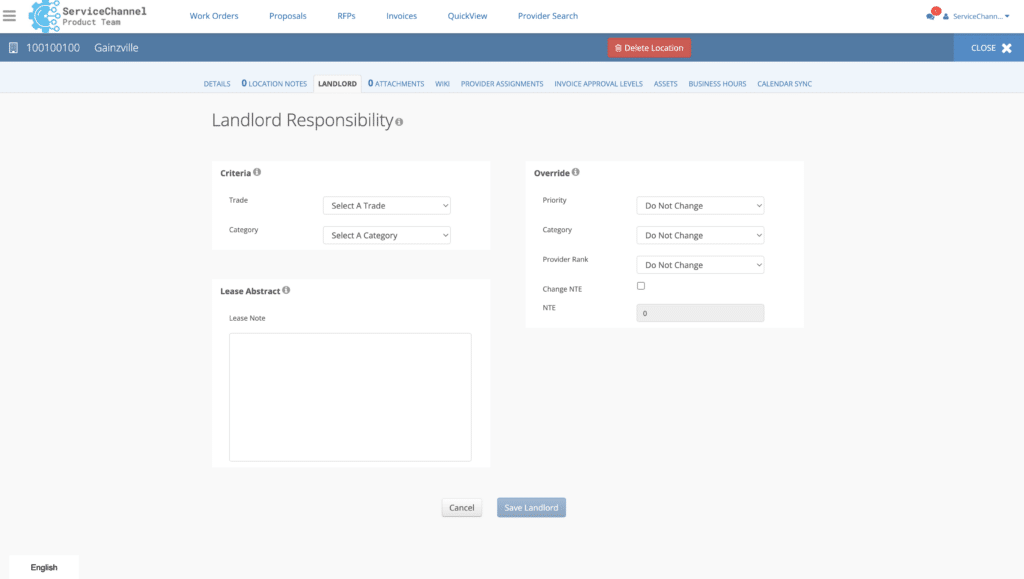How Businesses are Coping with the Skilled Labor Shortage

The strong US economy has created a white-hot labor market across both white and blue collar jobs. More than seven million jobs went unfilled in the United States this month – yet the labor participation remains under six million workers.

Clearly, the math doesn’t add up. This is a major predicament for businesses across all verticals, from the restaurant industry to construction and retail. The shortage is especially impacting businesses that require skilled laborers and tradespeople: Mechanics, technicians, maintenance staff, electricians, HVAC professionals, and so on. And the downstream effect? More frequent project delays, which lead to increased costs and jeopardized ‘brand uptime’ for businesses.
Smart business leaders need to employ creative strategies in order to attract and recruit more workers into skilled trades. Mike Rowe, star of the popular television show Dirty Jobs, has made this cause a personal crusade, going as far as to equate the decline of trade schools directly with the $1.6 trillion student loan “crisis” in the US.
Let’s take a look at a few ways businesses are coping with the skilled labor shortage and how it’s impacting the facilities management industry.
The Labor Shortage within Facilities Management
Within the FM industry, the employment prognosis may seem glum: The number of students graduating with an FM accredited degree has been steadily declining year after year. Meanwhile, positions are opening up, but the number of qualified individuals to fill them (even at entry-level) hasn’t caught up. Unfortunately, too many students are entirely unaware of the FM career path as an option – nor do they recognize it as one with many benefits and a high degree of job security.
Of course, this disparity in career awareness vs. available jobs extends to many of the other titles involved with or supporting FM. The contractors, service providers, and technicians who fulfill work orders are now in incredibly high demand, and some businesses have begun to recognize the shortage in the form of rising hourly rates and fewer contractor proposals to choose from.
How can businesses in the U.S. reconcile this rapidly widening gap?
Since the cause of the labor shortage is largely based on widespread perceptions (or misconceptions) around pay, labor conditions, and professional development opportunities, businesses must launch equally widespread initiatives to reverse them. These include:
-
- Prioritizing employee satisfaction
- Offering competitive pay and attractive perks
- Strategically allocating resources
- Reducing requirements around minimum education level and experience for some positions
- Investing in technology that frees up workers from mundane, repetitive tasks
If your team has yet to devise a plan to counteract the skilled labor shortage, you should think about doing so ASAP. Here are a few strategies to consider:
Offer Competitive Benefits and Salary
There’s no other way around it. Businesses that want to hire qualified, educated FM professionals and technicians need to step up and offer competitive salaries and attractive benefits packages. The key to setting desirable compensation is knowing the market: If you’re hiring in an expensive city, expect to pay a bit more than the national average. Then, think carefully about how much value this person will bring to your company when hired, especially if they choose to stay for a lengthy tenure. You may end up above the ‘going rate’, but it will be worth it in the long run.
It doesn’t end with salary, either. Benefits are equally important, and today’s job seekers are doing more research upfront about vacation policies, insurance coverage, overtime eligibility, and parental leave. If your offerings aren’t at least similar to those of nearby competitors, don’t expect a huge stack of applications. Even more importantly, state your policies and benefits clearly in job descriptions – and don’t forget to mention work-life balance, company culture, and any unique perks you’d like to highlight (like monthly outings to sports games, bi-weekly lunches, or a gym membership reimbursement program).
All of these factors contribute to the Employee Value Proposition (EVP) – which is, according to recruitment company Michael Page, “the unique set of benefits which an employee receives in return for the skills, capabilities, and experience they bring to a company.” Make sure your EVP is evident throughout your recruitment process to increase the likelihood of hiring and retaining a qualified FM contractor or specialist.
Invest in Automation Technology
When open facilities management positions remain unfilled for a stretch of time, businesses have to make strategic choices to balance the workload across existing team members in the interim. Often, these creative changes can improve the workplace environment across the board – for instance, implementing automation technology that alleviates some of the more tedious, time-consuming FM tasks.
Smart building technology, IoT-enabled sensors, and service automation platforms are a few innovative examples. A building set up with smart sensors can alert FMs when, for instance, air quality levels in a building fall below the normal range. Rather than waiting for an HVAC unit to fail (when it will probably need to be replaced), service automation technology tracks and records the abnormal air quality level pulled from the IoT database and suggests the creation of a new HVAC work order – which the FM can then accept and assign to a service provider within a matter of minutes.
These capabilities not only eliminate many of the remedial tasks that make FM jobs less desirable – they also serve to “upgrade” the FM profession as a whole, making it more relevant in the digital age. With a rise in STEM-focused career opportunities, newly re-skilled laborers will be more likely to seek out FM professions as an opportunity to sharpen their analytical and technical skills. For example: Automation technology allows businesses to transform their asset management program from a reactive operation to a strategic, forward-thinking process (preventing breakdowns before they occur with preventive maintenance planning). In turn, FMs hired for asset management must be well-versed in data analytics and project management in order to put together an efficient strategy that stays within budgetary limits.
Automation technology can also benefit the hiring process itself, especially when it comes to hiring contractors. ServiceChannel’s contractor directories, for example, integrate with the service automation platform to streamline the search and selection process. Businesses can quickly sort through service providers according to pre-set requirements around budget, years of experience, and reviews. The Compliance Manager tool then keeps track of existing contractors’ licensing and insurance status, making it easier for FMs to reach out to those who are no longer compliant and find a replacement if necessary.
Focus on Retention
During any labor shortage, companies are forced to recognize the value of their existing employees. It is far more costly (both in time and money) to hire and train someone new than it is to retain a current employee – the same principle goes for your customers. In order to retain your current team members, work on an employee satisfaction initiative that takes into account the benefits and challenges of each role.

Managers can improve job satisfaction by creating a working environment built on mutual trust and respect. In fact, a study conducted by the Harvard Business Review found that employees who feel that their superiors treat them with respect are 63 percent more satisfied with their jobs. And, of course, respect is built upon good communication and transparency. Make a point to tackle any flaws in communication across your FM program and check in with current employees regularly to find out how internal processes could be improved.
Oftentimes, implementing better technology is the cornerstone of improved communication. With a centralized FM platform in place – where work orders can be tracked, emergencies communicated, and asset data recorded – both FMs and service providers will have immediate access to important data and real-time updates relevant to their team’s performance. This, in turn, encourages strong interpersonal relationships and reduces the number of petty disputes between contractors, FMs, and so on.
Employee development and growth opportunities are also key components to ongoing job satisfaction, particularly among the more technical fields. A visible and attainable career path (with clearly marked milestones along the way, whether in the form of a promotion or a title change) will give your employees something to strive towards. Likewise, managers should be trained in productive leadership and conduct regular check-ins with team members to address any concerns before they grow into a larger issue.
By improving transparency and communication, investing in employee development initiatives, and implementing the right technology, businesses can outlast the skilled labor shortage and focus instead on locking down the real goldmine: Their trained and seasoned current employees.
Final Thoughts
The skilled labor shortage may be putting some businesses in a difficult position, but it’s also forcing many to restructure outdated internal processes and think about how they’re creating a strong employee value proposition. For the facilities management industry, the effects of the labor shortage have been especially pronounced. It may seem like hiring a new team member, even at entry-level, is near impossible. That problem is compounded with another, further down the FM chain, which is the increasing demand but declining supply of contractors, technicians, and skilled service providers.
Across the board, companies who have been successful in combating the labor shortage have applied a few critical strategies. First, they focus on retaining their existing employees, making sure work is evenly divided and cross-departmental communication is prioritized. Then, when actively hiring, they set competitive wages and market their unique employee benefits so that their job openings are genuinely desirable. Finally, they invest in automation technology that streamlines internal processes, improves transparency, and facilitates communication to both entice new workers and keep their existing ones happy.
Ready to take your FM program to the next level? Learn more about integrating innovative service automation and facilities management technology.




